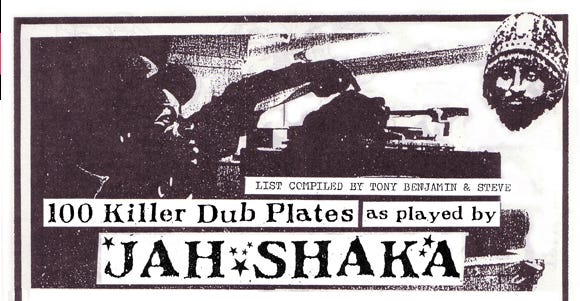So I've been thinking a lot about lists lately. My good friend Professor Kenneth Werbin wrote this amazing book called The List Serves: Population Control and Power where he digs into how lists have been used as these powerful tools for control - from Nazi identification systems all the way to today's terrorist watchlists. Heavy stuff, right?
But I'm interested in something adjacent but lighter - how lists have functioned in underground music scenes. Not as tools of oppression, but as secret maps, hidden knowledge, and badges of belonging for those in the know. Pre-internet, these lists weren't just recommendations. They were actual cultural artifacts that shaped entire musical worlds.
The Nurse With Wound List (1979)
If you've ever fallen down the experimental music rabbit hole, you've probably heard whispers of this one. It came tucked into Nurse With Wound's first album, Chance meeting on a Dissecting Table of a Sewing Machine and an Umbrella. This weird, sprawling catalog of 291 obscure artists that influenced them. What's wild is how this throwaway insert became this holy grail for collectors.
I know friends who traded photocopies of this list back in the 90s, marking off what they’d found like some musical scavenger hunt. They’d tell me how half these records weren’t just rare - they were practically mythical. Groups like Amos, Horrific Child, or Brainticket weren’t stocked at your local record store, that’s for damn sure.
The beauty of the NWW list was how it created this invisible community. If you knew what Secret Oyster or Annexus Quam meant to someone else hunting the list, you were part of something. The chase was almost better than the catch - though finally hearing some impossible-to-find Jean Dubuffet recording after years of searching felt like unlocking some cosmic secret.
Here’s aYoutube playlist with some of the bands from the list that someone has put together, or you can read more about bands from the list on this Bandcamp feature.
.
Jah Shaka's 100 Killer Dubplates
Closest to my heart, this list originally took form through whispers at sound systems. It was eventually solidified and committed to print In the winter of 1989 by a magazine called Boom Shacka Lacka.
Jah Shaka, a legendary dub operator in London, had this collection of dubplates, or exclusive acetate recordings that producers would cut specially for him.
These weren't records you could buy - they were one-offs with devastating bass, special effects, or exclusive vocals. Each dubplate carried this mystique that built Shaka's reputation as a selector. People would follow him from event to event just hoping to hear certain legendary dubs they'd heard about through friends.
I love how this list took shape purely through oral tradition. You'd be at some smoky community center in Brixton, and someone would nudge you when a particular track dropped: "That's the Augustus Pablo special dubplate - only Shaka has that one." The fact you couldn't Shazam it or find it online made each listen precious. These sounds existed only in that moment and in that space!
Read more about dubplates and sound system culture on my Yes Selecter
Kev Roberts' Top 500 Northern Soul
Northern Soul is probably the most fanatical scene I've ever encountered, and Kev Roberts' list perfectly captures its obsessive character. Published in 2000, it ranked 500 obscure American soul 45s that defined the Northern Soul movement in those working-class towns across Northern England.
What I find fascinating is how this scene completely flipped the script on musical value. These weren't hits - they were commercial failures in America that found new life on UK dancefloors. Records pressing-plant workers literally threw in dumpsters in Detroit became worth thousands of pounds to collectors in Manchester.
The Roberts list formalized what had been playground whispers and DJ crate secrets for decades. Finding Frank Wilson's "Do I Love You" (pressed in just a handful of copies) became like hunting the Holy Grail. I knew collectors who'd travel to abandoned warehouses in Chicago or Memphis on the mere rumor a stash of old 45s might be there.
What makes all these lists special isn't just the music they catalog - it's how they created communities through shared pursuit. Before everyone had everything at their fingertips, musical knowledge was earned through dedication, research, and connections. There was something magical about finally hearing a record you'd been searching for over years rather than seconds.
In a way, these weren't just lists of records - they were roadmaps to belonging, to identity, to being part of something bigger than yourself. And while Professor Werbin’s work reminds us that lists can divide and control, these musical canons show how they can also connect and preserve knowledge that might otherwise slip through history's cracks.
Thanks for reading and listening!
Sandy






Oh snap new Below the Surface drops. Great start to the day. love this one!